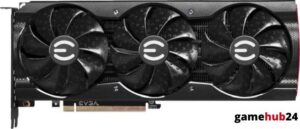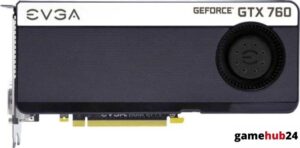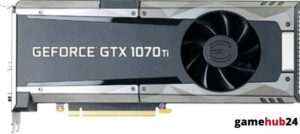Two significant participants in the field of 3D graphics libraries, DirectX and OpenGL, provide an interesting examination of their functions, capabilities, and distinctions. It’s also important to comprehend how they interact with hardware, other options, and potential developments in the fields of computer graphics and game creation.
Examining 3D graphics libraries, we’ve looked at the functions, efficiency, and main distinctions between DirectX and OpenGL. DirectX is a Microsoft software that works incredibly well for Windows and Xbox game development. The cross-platform API OpenGL excels in rendering vector graphics in two and three dimensions on a variety of platforms. Each has special benefits and interacts with hardware resources in a distinct way. Options such as WebGL, Metal API, and Vulkan API offer special advantages. With ongoing improvements, DirectX and OpenGL have a bright future.
- DirectX is a suite of multimedia APIs developed by Microsoft, optimized for Windows and Xbox platforms.
- OpenGL is a cross-platform API for rendering 2D and 3D vector graphics, offering high portability across systems.
- DirectX and OpenGL interact differently with hardware resources, leading to unique performance characteristics.
- Alternatives like Vulkan API, WebGL, and Metal API offer unique advantages and capabilities.
- The future of DirectX and OpenGL is promising, with continuous advancements and updates.
| API | Developer | Platform | Shader Language | Graphics Pipeline | Role in Game Development |
|---|---|---|---|---|---|
| DirectX | Microsoft | Windows, Xbox | HLSL | Fixed | High-performance games on Windows and Xbox platforms |
| OpenGL | Khronos Group | Cross-platform | GLSL | Programmable | Rendering 2D and 3D graphics, GPGPU computations |
| Vulkan API | Khronos Group | Cross-platform | SPIR-V | Programmable | High performance across multiple platforms |
| WebGL | Khronos Group | Web-based | GLSL | Programmable | Rendering 3D graphics within web browsers |
| Metal API | Apple | iOS, macOS | MTL | Fixed | Direct access to the GPU on iOS and macOS devices |
This table provides a comparison of different graphics APIs, including DirectX, OpenGL, Vulkan API, WebGL, and Metal API. It covers aspects such as the developer, platform, shader language, graphics pipeline, and their role in game development.
What are DirectX and OpenGL?
Both DirectX and OpenGL are powerful tools used in game development and 3D graphics libraries. The primary uses of DirectX, a group of Microsoft-developed APIs (Application Programming Interfaces), are in the video and gaming development domains on Microsoft platforms. Alternatively, a cross-platform API for rendering 2D and 3D vector graphics is called OpenGL (Open Graphics Library). It is the preferred choice for developers looking for a highly portable software interface to graphics hardware on a variety of platforms.
What is the role of DirectX in game development?
DirectX is an essential component of game creation, especially for Windows and Xbox systems. DirectX is a collection of multimedia APIs that gives programmers a powerful toolkit to work with hardware resources, including the GPU, and make high-performing games. Among other things, its connection with the Unity engine enables developers to make aesthetically captivating and interactive games. In the game business, DirectX gaming has come to be associated with excellent graphics and performance.
How does OpenGL contribute to 3D computer graphics?
One of the mainstays of 3D computer graphics is OpenGL. It gives programmers an extensive set of commands to produce sophisticated 2D and 3D visuals, ranging from straightforward forms to intricate polygons. Because OpenGL rendering is platform-neutral, it’s a flexible option for developers creating cross-platform software. Its versatility and wide popularity are highlighted by its interoperability with a wide range of hardware, including the Nintendo Switch and Nvidia graphics cards.
Realize that DirectX isn’t limited to Windows and Xbox. It was also utilized by the Sega Dreamcast console, which is one of the few DirectX-enabled non-Microsoft devices.
How do DirectX and OpenGL compare in terms of performance?
Each of OpenGL and DirectX has advantages in terms of performance. Being a Windows-specific API, DirectX is better on Windows and Xbox because it is tuned for Microsoft platforms. Because of its cross-platform features, OpenGL provides reliable performance on a range of operating systems, including Linux and macOS. Often, the decision between DirectX and OpenGL depends on the particular requirements of the project and the intended platform.
What are the performance implications of DirectX on Microsoft Windows?
DirectX has significant performance benefits since it is deeply integrated into Microsoft Windows. Developers are able to fully utilize the hardware resources available to them, which leads to improved graphics quality and better frame rates. Since the DirectX API forms the foundation of many Windows-based game development tools, developers that want to create high-performance games on Windows tend to favor it.
How does OpenGL performance vary across different platforms?
Because OpenGL is cross-platform, its performance might differ greatly between platforms. Although it might not run as well as DirectX on Windows, it excels on Linux and macOS, two operating systems that do not support DirectX. OpenGL is a flexible tool for developers working on cross-platform applications since it can provide consistent performance across a broad range of hardware.
What are the key differences between DirectX and OpenGL?
While having comparable functions, DirectX and OpenGL are not the same in a number of important ways. Their programming languages for shaders and how they use hardware resources are just two examples of these distinctions. Developers can select the best API for their unique requirements by being aware of these distinctions.
Advice: Take into account utilizing OpenGL if you’re using Unity to create a game that will run on Windows, macOS, and the Playstation 4. Because of Unity’s strong OpenGL support, cross-platform compatibility will be ensured.
How does the shader language differ between DirectX and OpenGL?
DirectX and OpenGL shader languages are very different from one another. Microsoft’s proprietary High-Level Shader Language (HLSL) is used by DirectX. Since HLSL and C share grammatical similarities, many developers are familiar with it. Conversely, OpenGL makes use of the OpenGL Shading Language (GLSL). Similar to HLSL, GLSL has a syntax similar to C but has support for vector and matrix operations, which are essential to 3D graphics.
What are the differences in the graphics pipeline?
There are differences in the graphics pipeline between DirectX and OpenGL, which is the method used to convert 3D models into 2D visuals. Although it may be simpler for novices to understand, DirectX has a predefined pipeline that provides less flexibility. Although it comes with extra complexity, OpenGL offers programmers greater control over the rendering process through its programmable pipeline.
How do DirectX and OpenGL interact with graphics hardware?
Different approaches are taken by DirectX and OpenGL in their interactions with visual hardware. The effectiveness and capabilities of the APIs are largely determined by these interactions.
How does DirectX utilize the GPU for rendering?
The GPU (Graphics Processing Unit) is heavily used by DirectX for rendering. It transmits data and instructions for processing straight to the GPU through direct communication. High-quality visuals and seamless performance are the outcome of DirectX’s ability to fully utilize the GPU thanks to this direct interface. Because of its effective use of hardware resources, DirectX is a well-liked option for Windows and Xbox game development.
What is the role of OpenGL in GPGPU?
GPGPU, or general-purpose computing on graphics processing units, is a computing paradigm that leverages the GPU to perform tasks that would otherwise be performed by the CPU. OpenGL is a key component of this paradigm. With the help of OpenGL’s APIs like CUDA and OpenCL, programmers can use the GPU’s processing capability for non-graphical tasks. Because of this feature, OpenGL is a flexible tool that may be used for a variety of computing tasks, not just graphics rendering.
What are the alternatives to DirectX and OpenGL?
There are more options available in the graphics API space, even if DirectX and OpenGL are the two main contenders. Some alternatives, such as WebGL, Metal API, and Vulkan API, have special benefits and features that make them more appropriate for particular use cases.
How does Vulkan API compare to DirectX and OpenGL?
Another new player in the graphics API market is Vulkan API, which is being developed by the same group that created OpenGL, the Khronos Group. Like DirectX, Vulkan provides lower-level hardware access, but OpenGL’s cross-platform capabilities are included. Vulkan is a strong substitute for DirectX and OpenGL because of this combination, especially for developers looking for great performance on several platforms.
What are the advantages of WebGL and Metal API over DirectX and OpenGL?
Compared to DirectX and OpenGL, WebGL and Metal API each have special advantages. WebGL is a JavaScript API that provides unmatched accessibility and platform neutrality for rendering 3D visuals in any compatible web browser. Apple created the Metal API, which offers iOS and macOS devices near-direct GPU access, resulting in remarkable speed and efficiency. For developers looking to create for the web or Apple platforms, these APIs present attractive possibilities.

What is the future of DirectX and OpenGL in the context of 3D graphics and game development?
It appears that DirectX and OpenGL have a bright future in the field of 3D graphics and game creation. With ongoing improvements and modifications, both APIs are set to continue being useful and effective tools for developers.
What are the potential advancements in DirectX for video game consoles?
Video game consoles could see major developments in the field of DirectX. New console generations, such as the Xbox Series X, are anticipated to bring even better visuals and performance from DirectX. The addition of capabilities like ray tracing to DirectX 12 Ultimate is an indication of Microsoft’s dedication to advancing the state of game graphics technology.
How is OpenGL evolving in the realm of cross-platform computer graphics?
To keep up with the demands of cross-platform computer graphics, OpenGL is always changing. OpenGL is continuously being improved and updated by the Khronos Group to maintain its competitiveness against rival APIs. OpenGL is poised to maintain its essential role in cross-platform graphics development due to its extensive interoperability and adaptable pipeline.

















